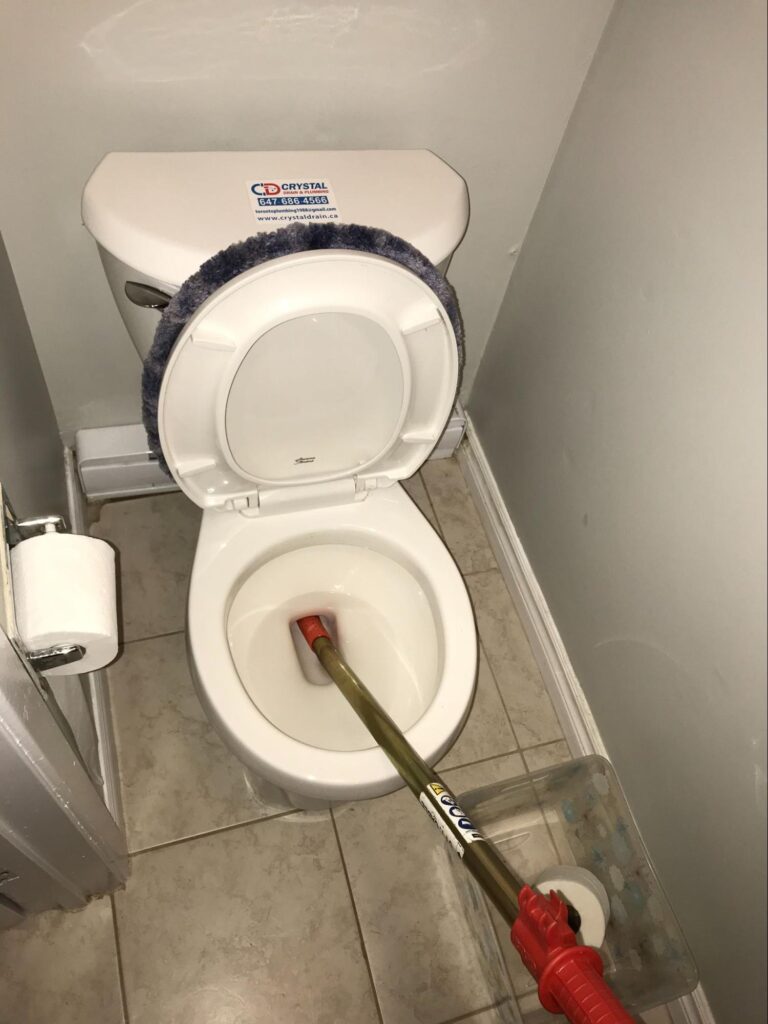- Last updated: January 15, 2025
4 Plumbing Quick Fixes You Should Learn

Owning a home comes with its share of minor plumbing mishaps. While some issues require the expertise of professionals, having a few quick fixes up your sleeve can save you time and money. At Crystal Drain & Plumbing, we believe in empowering our clients with practical knowledge to handle common plumbing problems. Here are four quick fixes every homeowner should learn.
Key Takeaways
- Unclogging a Sink: Use a plunger to clear blockages from food particles, grease, or hair. Prevent future clogs by avoiding grease and cleaning the trap periodically.
- Fixing a Running Toilet: Adjust or replace the flapper and ensure the float is set at the correct level to prevent water wastage.
- Stopping a Leaky Faucet: Replace worn-out components like O-rings and cartridges to stop leaks and save water.
- Addressing Low Water Pressure: Clean faucet aerators, inspect pipes for leaks, and if necessary, contact your water supplier for assistance.
1. Unclogging a Drained Sink

Problem: A common issue many homeowners face is a clogged sink, often caused by food particles, grease, or hair build-up.
Quick Fix:
- Step 1: Remove any standing water and place a plunger over the drain.
- Step 2: Ensure there is enough water in the sink to cover the plunger’s base and create a seal.
- Step 3: Pump the plunger vigorously up and down several times, then swiftly pull it off the drain.
- Step 4: Check if the water is draining properly. If not, repeat the process.
Pro Tip: Avoid pouring grease or coffee grounds down the sink to prevent future clogs. Clean your sink’s trap periodically to remove debris. For persistent clogs, contact us for professional drain cleaning services.
2. Fixing a Running Toilet
Problem: A running toilet can waste a significant amount of water and increase your utility bill.
Quick Fix:
- Step 1: Remove the lid from the toilet tank and inspect the flapper. If it’s not sealed properly, adjust it or replace it if it’s worn out.
- Step 2: Check the fill valve and float. The float should be at the proper level to stop water flow when the tank is full.
- Step 3: Adjust the float by bending the float arm or turning the adjustment screw to set the correct water level.

3. Stopping a Leaky Faucet
Problem: A dripping faucet is not only annoying but also wastes water, and can significantly drive up the costs of your water bill.
Quick Fix:
- Step 1: Turn off the water supply to the faucet and plug the drain to avoid losing any small parts.
- Step 2: Use a wrench to remove the faucet handle and expose the cartridge or valve inside.
- Step 3: Inspect the components for damage or wear. Replace O-rings, cartridges, or washers as needed.
- Step 4: Reassemble the faucet and turn the water supply back on to check for leaks.
4. Addressing Low Water Pressure
Problem: Low water pressure can be caused by mineral build-up, leaks, or issues with the municipal water supply.
Quick Fix:
- Step 1: Check the aerator on your faucet by unscrewing it and cleaning it out. Soak it in vinegar to dissolve mineral deposits.
- Step 2: Inspect your pipes for leaks or signs of corrosion and repair as necessary.
- Step 3: If the issue persists, it could be a matter of the municipal supply, and you may need to contact your water supplier.
Pro Tip: Regularly clean and maintain your plumbing fixtures. For more significant pressure issues, our experts at Crystal Drain & Plumbing can provide a thorough inspection and solutions.
When to Call the Experts
Learning these quick fixes can help you manage minor plumbing issues efficiently. However, for more complex problems or persistent issues, it’s essential to rely on professional help. At Crystal Drain & Plumbing, our experienced technicians are ready to assist with any residential or commercial plumbing needs in Toronto and the Greater Toronto Area.
FAQs
If a plunger doesn’t work, try using a drain snake or a homemade mixture of baking soda and vinegar to break up the clog. If these methods fail, it’s time to call a professional plumber for drain cleaning.
In most cases, adjusting or replacing the flapper, fill valve, or float will resolve the issue. If the problem persists, you may need to replace more complex components like the flush valve.
Faucet leaks are often caused by worn-out washers, O-rings, or cartridges. Replacing these parts can usually fix the issue. If the leak continues, there may be a deeper problem requiring professional repair.
Check and clean the aerator, inspect for pipe leaks, and ensure the municipal water supply is functioning properly. If the issue persists, a professional inspection can help pinpoint the cause.
Regular maintenance is key to preventing plumbing issues. We recommend scheduling annual inspections and cleanings to keep your plumbing in top shape.
